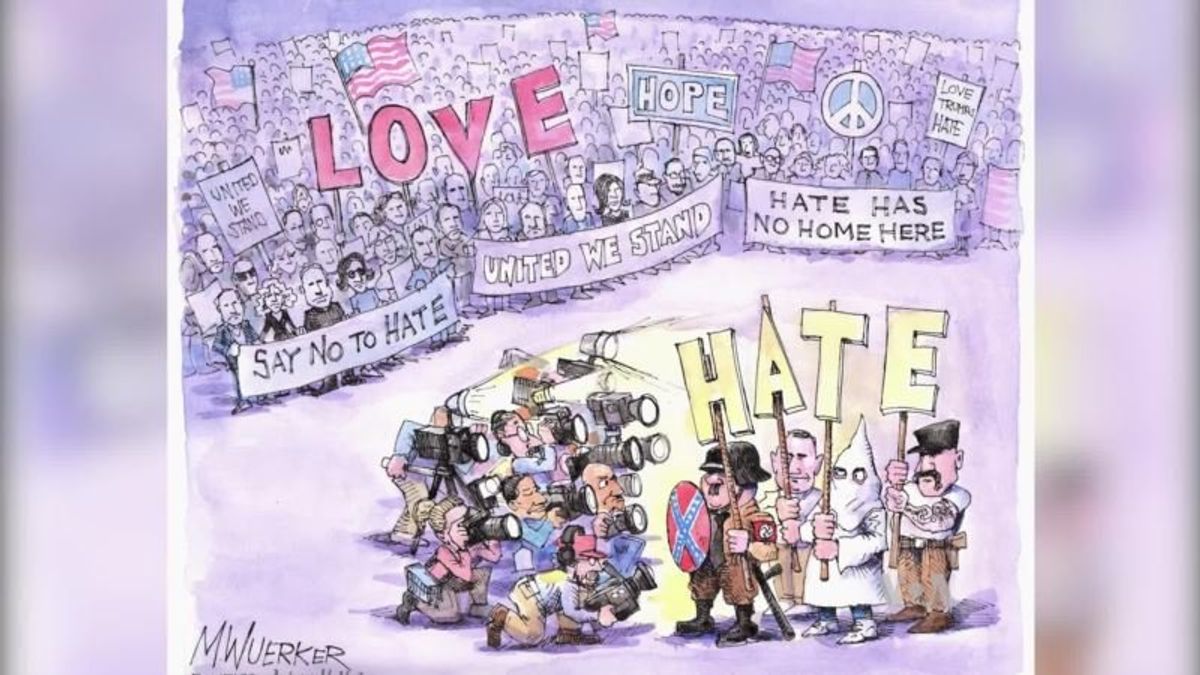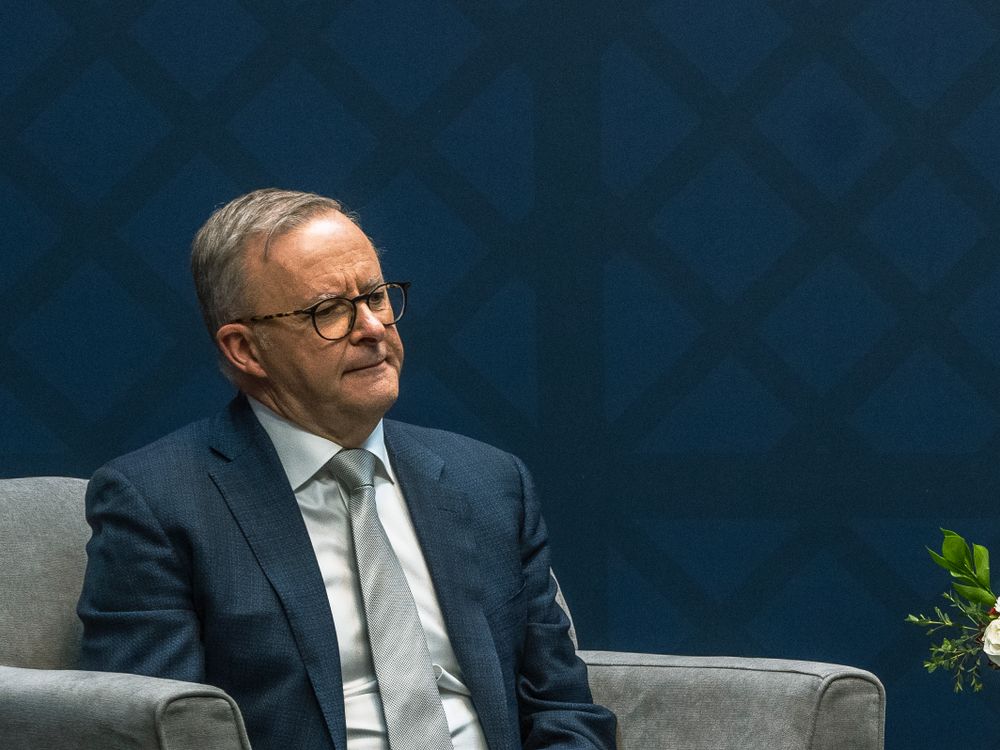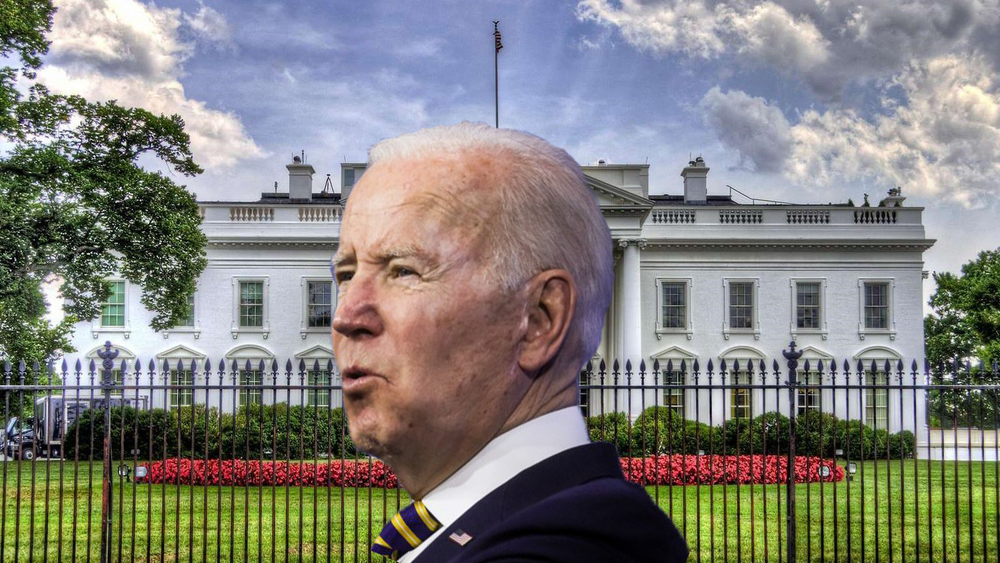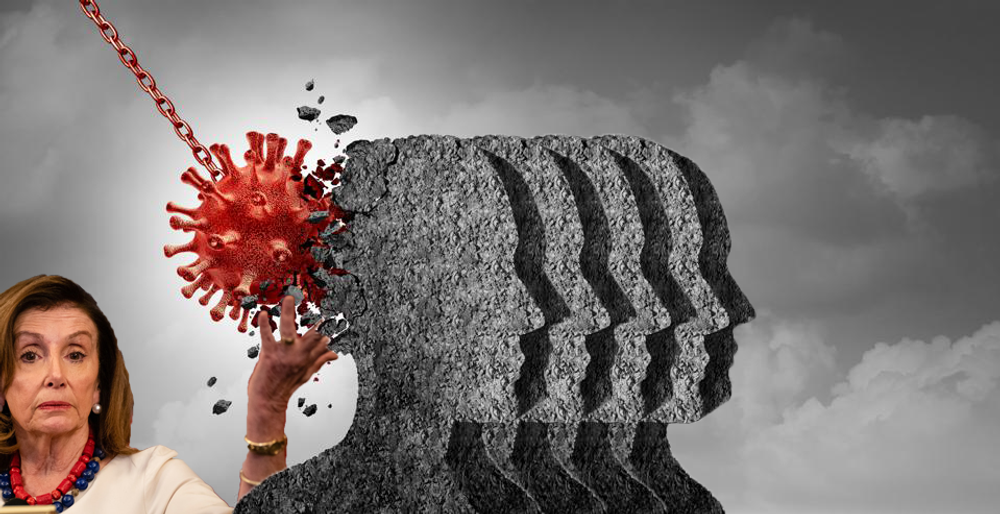
Editorial Cartoons Pack Powerful Messages
Editorial Cartoons Pack Powerful Messages ARLINGTON, VA —
Editorial cartoons — also known as political cartoons — have been around as long as there’s been political discourse and dissent.
In the U.S., they’re a vibrant part of American culture and history, and no matter how controversial, are protected as free speech under the First Amendment to the U.S. Constitution. In fact, the late Pulitzer-Prize winning cartoonist Doug Marlette described them as “the acid test of the First Amendment.”
An unusual calling
Matt Wuerker is a staff cartoonist for Politico, an American political journalism company based just outside the nation's capital.

He says it’s an unusual job.
“We’re a strange mix of things in that we are making serious commentary on serious topics, but we're doing it not so seriously,” he says. “We like to see ourselves as opinion columnists that you'd see in a newspaper or somebody on TV who's offering their opinion… and we get to draw our opinions with silly pictures!”
The Pulitzer-Prize winning cartoonist says the main advantage of a political cartoon is being able to communicate an opinion very quickly.
“I can draw a picture and put in a little word bubble and you can read it in about four seconds and you get it,” he says. “So it's a very interesting vehicle for expressing an opinion if you do it right.”
“It has to hit you in the face kind of hard and fast and you know it when you've been hit.”
A good example of that is his popular Thanksgiving cartoon where he shows a family gathered around the dinner table about to partake in the much-revered Thanksgiving meal. While Mother brings the turkey to the table, family members are shown immersed in their mobile phones instead of paying attention to this time-honored ritual.

He was inspired by a popular painting by American artist Norman Rockwell who painted idyllic scenes reflecting American culture.
While Wuerker created the cartoon for an American audience, its message is universal; a striking example of how technology is disrupting such simple rituals as meal time.
A variety of styles
Wuerker's cartoons are very ornate and detailed and painted in a variety of colors. But he’s a bit envious of other cartoonists he says, who can express themselves with a simple line drawing. They can “make the statement with very little drawing and it can be just as effective, if not maybe more effective,” he says.
The format of cartoons has evolved, he says.
“When I started 40 years ago doing cartoons, an editorial cartoon was a black-and-white single-panel cartoon in a newspaper. And now cartoons can be color, they can be animated, they can be graphic novels that are political.”
Like the 2018 Pulitzer Prize-winning work by journalist Jake Halpern and illustrator Michael Sloan currently on display at the Newseum in Washington.

“They did something quite extraordinary,” says Patty Rhule, Vice President of Exhibits at the Newseum. “They did a 20-part series in the New York Times following the story of two Syrian immigrants who fled the war in Syria to come to this country and start a new life with their families.”
It marked the newspaper's first Pulitzer Prize for editorial cartooning.
Rhule says editorial cartoons “bring faces and art to current events and tell stories in a way that journalists who are reporting strict facts can’t always do,” adding that the graphic novel format the two journalists used “takes cartooning to a whole new level; they add a note of commentary on what is happening in the world.”
Editorial cartoons have always been an important part of American culture, she adds.
“Since the beginning of this country, editorial cartoons have been framing issues and framing debate — from Ben Franklin's Live Free or Die [Join, or Die], the segmented snake that rallied the 13 colonies together. So it's always been a part of this country and the world's way of freely expressing ideas and debate, and so I hope they never go away.”
Cartoon backlash
But free expression sometimes comes at a heavy price.
In 2015, Islamic terrorists attacked the offices of Charlie Hebdo, a French satirical magazine, after it published unflattering cartoons of the Prophet Mohammed. Twelve people were killed in the attack, including several prominent cartoonists.
“And within their [Islamic] culture they are certainly entitled to be offended, but they’re not entitled to decide that they're going to go to Paris and kill the people who created that cartoon that was really intended for a French audience,” Wuerker says.
He has great respect, he says, for cartoonists who keep working despite the dangers.
“In the course of my career I’ve gotten to know a lot of cartoonists from different parts of the world, and the ones that really impress me are the ones that keep drawing despite having to live with constant threats all the time.”
"Many cartoonists have had to flee their country because they were brave enough to take on regimes or political figures that don't understand that a free press is a salutary thing," he adds.
He hopes that in these troubled times, people will appreciate cartoons for what they are.
“The times have become so vitriolic and people are so quick to anger. I think the good kind of political cartooning is something that slips in a really good political point with a certain amount of good humor and wit that people will process and hopefully won’t make them angry but will make them think.”
 Trump Downplays Payments to Women Who Alleged Affairs With HimNext PostUS Presidential Hopefuls Pushed to Go Big on Climate Change
Trump Downplays Payments to Women Who Alleged Affairs With HimNext PostUS Presidential Hopefuls Pushed to Go Big on Climate Change







